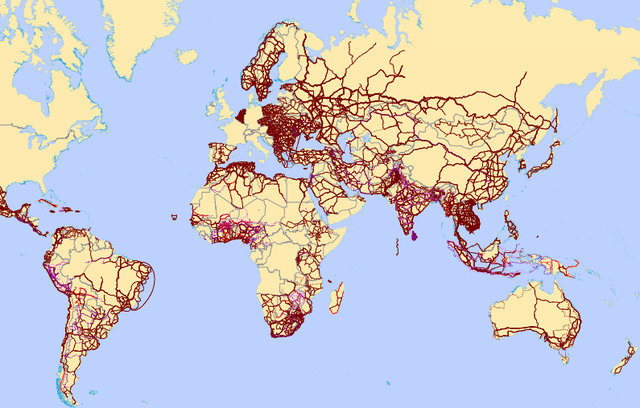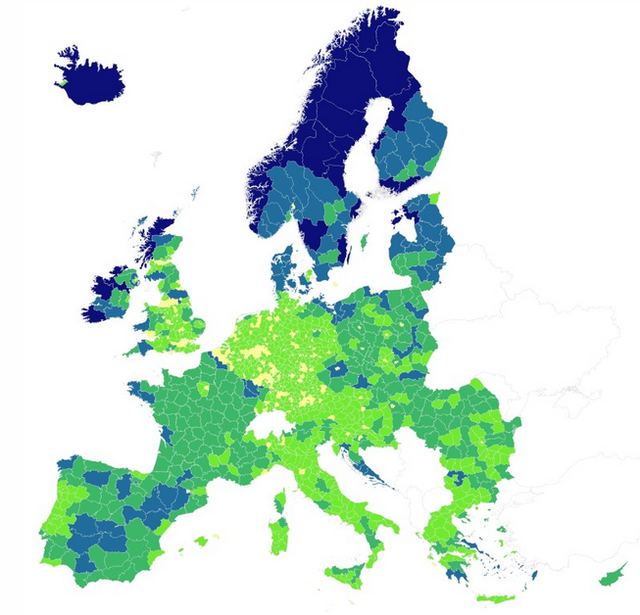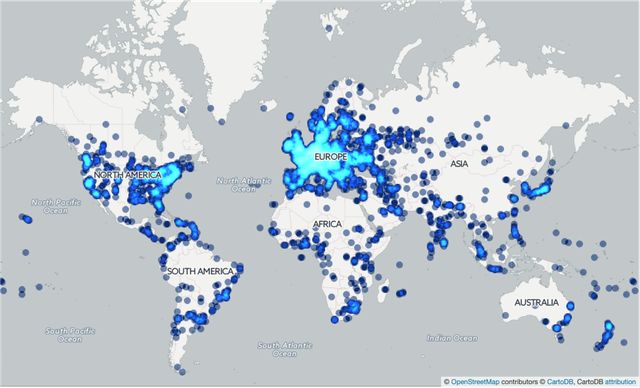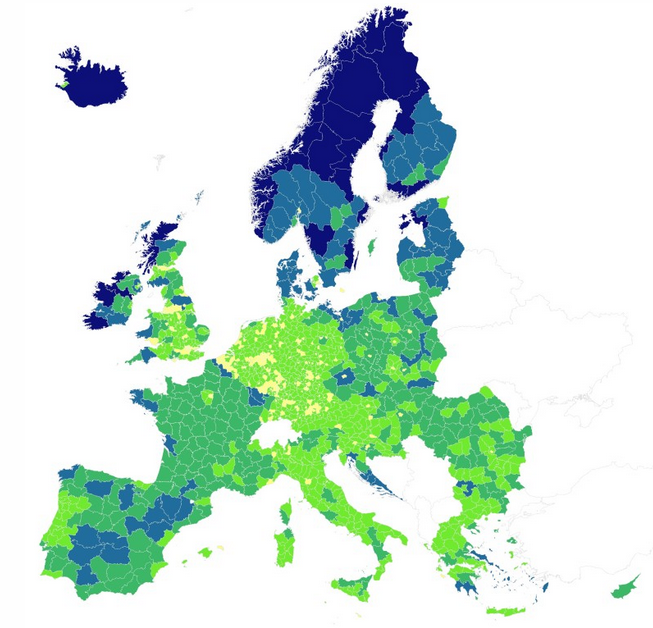I attended a conference on Broadband Services and Infrastructure Mapping, which I think had some interesting content for RIPE Labs readers.
Introduction
The ITU-EC Regional Conference for Europe on "Broadband Services and Infrastructure Mapping" was held in Warsaw, Poland from 11 to 12 April 2016. The Conference was organised by the development sector of the International Telecommunication Union (ITU-D) and the European Commission (EC) in partnership with the Office of Electronic Communications of Republic of Poland. It was organised in the framework of the Regional Initiative for Europe on Broadband.
The conference was meant to "provide a platform for dialogue between ITU-D, the EC, ITU Member States and Sector Members with particular emphasis on national, regional and international broadband services and infrastructure mapping initiatives, as well as the ways how such undertakings may provide the value for policy makers, regulators, market, as well as end users."
Conference
The conference was well attended, with an audience mainly consisting of stakeholders in the policy and regulatory sphere, and a significant part of them I'd also characterise as, underneath quite formal attire, map geeks. Here are some of the highlights of the conference:
The ITU-D produces an interactive transmission map . The main goal is to see areas that are not served by physical cabling (see Figure 1). Note the map is incomplete as some countries have not provided data (yet).

Figure 1: ITU Transmission Map
The EU Broadband Monitoring Platform Project is an effort to harmonise between the local (typically country-scope) broadband mapping projects. This project has produced a nice map showing broadband coverage in Europe (see Figure 2).

Figure 2: Broadband coverage in Europe
Many of the presentations at the conference where about local mapping efforts, for instance in the Czech Republic , in France , Denmark , Lithuania and Hungary . The maps produced were typically based on the physically layer (ISO layer 1) and the capabilities of the specific infrastructures operating at this layer.
RIPE Atlas and broadband
The RIPE NCC was invited to present on RIPE Atlas . The main purpose was to make the audience aware of RIPE Atlas. RIPE Atlas doesn't measure broadband services or infrastructure at the physical layer that most of the mapping projects in this conference operate at. Instead it operates mostly on the network layer (IP) and above. Some capabilities that I highlighted included the ability to provide data on outages, look at routes taken on the Internet (does traffic stay local? what's the effect of an IXP in a country ?). I also mentioned some of the challenges we've faced in deploying RIPE Atlas in all regions of the globe or in measuring places where there is little Internet (see Figure 3).

Figure 3: RIPE Atlas network extent (see Andreas Strikos' interactive map )
If we look at where we can make the local infrastructure mapping projects and RIPE Atlas work together, one possibility is calibration of measurements taken by the local mapping projects. As some local projects have measurement capabilities like bandwidth and latency between local nodes, RIPE Atlas has measurement capabilities across the globe. The local measurement capabilities are typically client-to-server. What we could do for RIPE Atlas is to start targeting the same servers as the local measurement projects, so it can serve as a baseline to compare to, and provide a stable platform with long-term time series.
Conclusions
For people unaware of the various mapping efforts, I hope this article and the presentations from the conference help in finding out more about them. It was good to see that RIPE Atlas was well received in this community. I was happy to be able to learn more about other mapping and measurement projects and to talk to people about potential collaborations with the RIPE NCC in the area of RIPE Atlas and other tools. If you have other suggestions on ways the RIPE NCC could cooperate with these mapping efforts (in the area of RIPE Atlas) and provide useful outcomes for the RIPE community, please let us know.





Comments 4
The comments section is closed for articles published more than a year ago. If you'd like to inform us of any issues, please contact us.
André Lobo •
HI, I belive the link for presentations from the conference is brock, can you check?
Sebastian Castro •
Please note the last link "presentations from the conference" the URL is wrong. It has a leading space and the protocol is the URL is written as "http//"
Mirjam Kühne •
Thanks for pointing this out. It should work now. Sorry about that.
Clark Greene •
Nice article, thanks! Interesting choice of colour on that ITU map, it really makes it all look like blood vesels connecting tissues, going from thick ones to capilaries. After all, it's the blood of the modern world flowing through them...